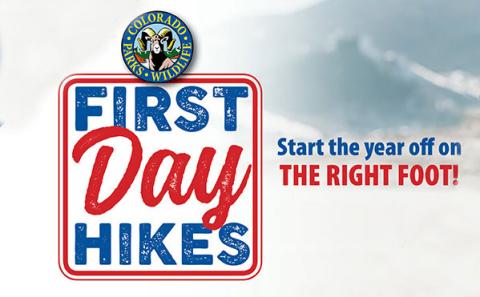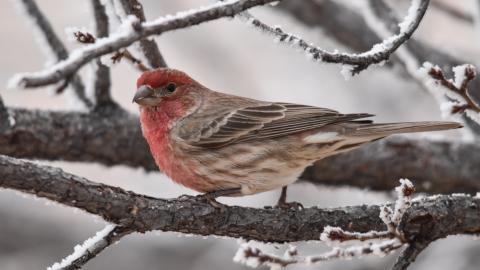Christmas and New Years Office Closure
Colorado Parks and Wildlife offices will be closed on December 24, December 25, December 26 and January 1.
Christmas and New Years Office Closure
Colorado Parks and Wildlife offices will be closed on December 24, December 25, December 26 and January 1.

State Park in Brighton, CO
Hours:
Park: Daily 5 a.m. to 10 p.m.
Nature Center: Tuesday through Sunday, 9 a.m. to 4 p.m. (closed Monday)
Entrance Fees:
Animals Permitted:
Park Address:
13401 Picadilly Road
Brighton, CO 80603
United States
State Park in Brighton, CO
Hours:
Park: Daily 5 a.m. to 10 p.m.
Nature Center: Tuesday through Sunday, 9 a.m. to 4 p.m. (closed Monday)
Entrance Fees:
Animals Permitted:
Park Address:
13401 Picadilly Road
Brighton, CO 80603
United States
Person in an orange kayak on Barr Lake
About this park
Barr Lake State Park provides a sanctuary for both wildlife and people. A reservoir that covers more than 1,950 acres is the heart of this 2,715-acre park. The lake is surrounded by cottonwoods and marshes and is home to aquatic plants. Its southern half has been chosen as a wildlife refuge to shelter animals and a greater variety and number of birds than anywhere else in Colorado. Just a short drive northeast of the Denver area, Barr Lake State Park has something for every type of outdoors person, from the fishing enthusiast and boater to the naturalist.
2,715
acres
371+
species of birds
60
picnic sites
21
miles of trails
From Denver
Take I-76 northeast and then exit 22 to Bromley Lane. Go east to Piccadilly Road, then south to the park entrance.
From E-470
From E-470 exit 34, 120th Ave, go east to Tower Rd. Turn left onto Tower Rd. and follow the pavement to Piccadilly Rd. Make a left on Piccadilly. The park entrance is about a mile ahead on the left.
The Barr Lake Visitor and Nature Center is located near the south parking lot.
Hours:
Tuesday through Sunday, 9 a.m. to 4 p.m.
Closed Monday
The boat ramp is located on the east side of the lake and accessed through the main entrance.
Water levels are dropping quickly at Barr Lake. The boat ramp will be CLOSING no later than Sunday 8-24-2025.
The lake and boat ramp are CLOSED for the season due to low water levels. Any type of boating, including kayaks and canoes, is prohibited.
Pass |
Description |
Duration |
Cost |
|---|---|---|---|
|
Daily Vehicle Pass |
Single vehicle and its occupants |
1 Day |
$10-$12 |
|
Individual Daily Pass |
For individual entry on foot, bicycle, horseback, etc at select parks |
1 Day |
$4 |
|
DMV vehicle registration renewal option for Colorado residents |
12 Months |
$29 |
|
|
Annual Vehicle Pass (Affixed) |
Pass for a single vehicle and its occupants |
12 Months |
$80 |
|
Family Annual Pass (Hang Tag) |
Members of the same household |
12 Months |
$120 |
|
Aspen Leaf Annual Pass |
Colorado residents 64+ |
12 Months |
$70 |
|
Centennial Pass |
Income-eligible Colorado residents |
12 Months |
$14 |
|
Columbine Pass |
Colorado residents with disabilities |
12 Months |
$14 |
|
Veterans License Plate |
DMV vehicle registration renewal option for military veterans (disabled veterans or purple heart plates) |
Lifetime |
Free |
|
Independence Lifetime Pass |
Colorado resident veterans with disabilities |
Lifetime |
Free |
|
Blue Spruce Pass |
Colorado resident first responders with disabilities |
Lifetime |
$10 |
Barr Lake State Park offers the nature enthusiast a remarkable opportunity to observe all types of wildlife.
Bird, plant and wildlife guides are available on Barr's State Park's iNaturalist app observations for Android and iPhone. iNaturalist is a free online social network and citizen science platform that allows users to record and share observations of biodiversity. By uploading photos or sounds of wild organisms, you can get help identifying species from a global community of naturalists and even an automated identification tool. Using iNaturalist helps you learn about local nature, connect with other enthusiasts, and most importantly, contribute valuable scientific data to biodiversity research and conservation efforts worldwide.
Be on the Lookout for Birds
Can you spot all 371 bird species? Download the Bird List Brochure (PDF).
View a short video and tips on watching wildlife safely and find important information on crossing paths with wildlife.
The park is lacking vital data on amphibian and reptile populations. By logging your reptile and amphibian observations into iNaturalist, you'll help us collect data that's essential for protecting and preserving the Park's natural resources.
Barr Lake is a great place to view the Rocky Mountains rising from the plains much as early settlers did when they first arrived in the area. Historically, Barr Lake was a bison wallow — a deflation basin created by strong prairie winds. Native vegetation like sand dropseed and sand sage speak of our sandy soil, comprising Pleistocene, recent alluvium, and sand blown from the South Platte River Basin.
While much of the prairie at Barr Lake is a mix of drought-tolerant exotic species, prairie restoration efforts have returned some natives to the area. Observe a native mixed grass prairie "lawn" at the Nature Center. Buffalo grass, side-oats grama and blue grama create a delightfully beautiful (and low-maintenance) lawn full of color and interest. Other prairie restoration efforts around the lake have created stands of native little and big bluestem grasses.
Jan
1
Thursday, Jan 1
Barr Lake State Park
Celebrate the new year by participating in a guided nature hike at Barr Lake State Park.
Jan
1
Thursday, Jan 1
Barr Lake State Park
Celebrate the new year by participating in a guided nature hike at Barr Lake State Park.
Jan
7
Wednesday, Jan 7
Barr Lake State Park
Join volunteer naturalists Candice and Tim for a birding hike in the park. This walk is to introduce park visitors and all...
Jan
7
Wednesday, Jan 7
Barr Lake State Park
Join volunteer naturalists Candice and Tim for a birding hike in the park. This walk is to introduce park visitors and all...
Jan
7
Wednesday, Jan 7
Barr Lake State Park
This is a beginners class for fly tying and intro to fly fishing fundamentals.
Jan
7
Wednesday, Jan 7
Barr Lake State Park
This is a beginners class for fly tying and intro to fly fishing fundamentals.
Barr Lake is named for one of the civil engineers who worked on the railroad in the area.
More than 150 years ago, the Barr Lake area was a bison wallow where bison, wolves and elk gathered, taking advantage of available water. Nearby, pronghorn antelope roamed the fertile mixed-grass prairie. All this wildlife brought Native American tribes like the Arapaho, Cheyenne and Ute to the area. They would come here at different times of the year to hunt and find food.








